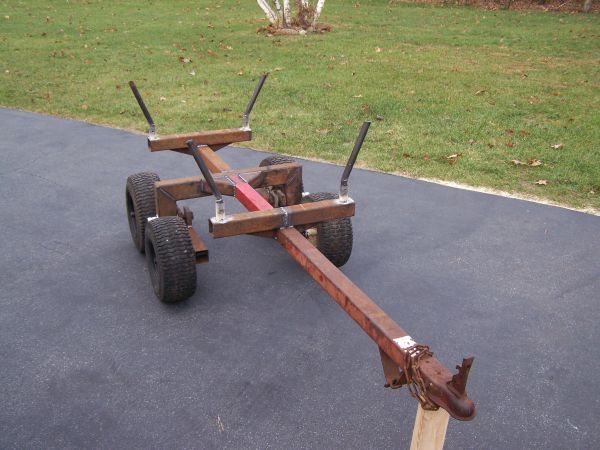All-terrain vehicles improve access to the backcountry. ATVs and side-by-sides excel at carrying people, but their restricted cargo room limits the gear we can haul in, and the meat we can pack out. To better suit my outdoor adventures and projects around my homestead, I needed more space to haul the necessary gear. It was time to build a utility trailer!
Advertisement
In the spirit of any good DIY project, salvaged materials kept my costs down. I used as much repurposed metal as possible to create my ATV trailer. When using old metal, good prep improves weld quality, so I brushed or ground off rust and old paint.
Advertisement
I rate this project as intermediate both for its required skill level and time to complete. To tackle this project, you’ll need access to a welder and a compliment of workshop tools. I chose wood planks for the decking, so a method to cut wood to length helps too. I’m not a welder by training, so there was a steep learning curve.
Nevertheless, using a MIG welder and attention to detail, I achieved ‘professional’ results.
The hardest part of the project was coming up with a design. Plan considerations included trailer purpose, bed size, ground clearance, tires, hitch, load capacity and overall trailer weight. Some of decisions were easy, based on locally available materials – type of hitch, for example. Others crystalized after much deliberation. With my trailer specs and materials in hand, it was time to start cutting.
Advertisement
I cut the metal parts with a chop saw, a bandsaw and a special thin cutting blade on an angle grinder – any of the three will work well. The three-foot by five-foot frame was built using one-and-a-half-inch square tubing, which is strong and makes a superb platform on which to mount everything else. Simple butt joints to make neat square corners simplified welding for a beginner. Using two-inch square tubing for extra strength, I welded the tongue at 26 inches, allowing ample clearance between the ATV and trailer, even during tight turns. For frame strength and a place to secure the decking, I welded angle iron side to side across the trailer in strategic locations.
For frame strength and a place to secure the decking, I welded angle iron side to side across the trailer in strategic locations.
The wheel assembly is the most complicated part of this project. An online search returns several suitable ideas, from a simple straight axle with no suspension, to more complex walking axle designs. For me, design considerations included the type of tire. I opted for a standard 14-inch trailer tire and reduced the fabrication process by purchasing a pair of bolt-on equalizer torsion axles for a five-bolt rim. Swapping tire hubs to a four-bolt ATV style will accommodate off-road ATV-style floatation tires. I fabricated the axle supports using angle iron. Using the wheel assembly as a template, I marked and drilled holes to accommodate the bolts.
I used a wire wheel on an angle grinder to clean and rough up the metal surface of the trailer prior to painting. For paint, a rattle-can of spray paint for metal did the trick. To prevent slipping when wet, I plan to add a rubberized rocker guard paint on the tongue.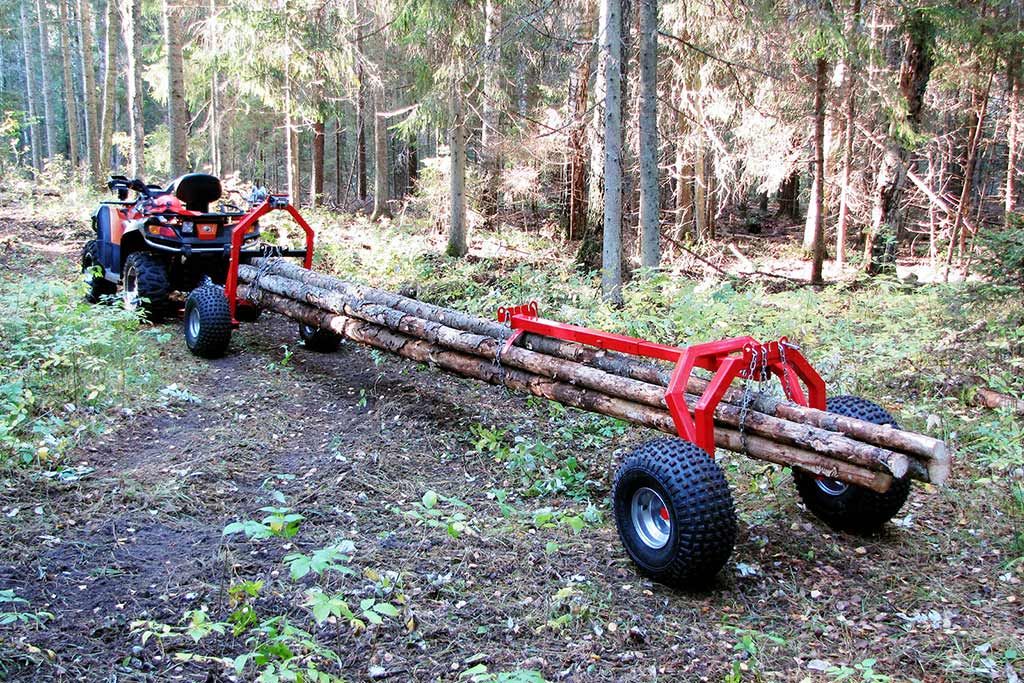
With the trailer still upside down, I bolted the axle assemblies to the frame and installed the tires. My wife and I easily lifted the trailer off the sawhorses and rotated it to sit on the ground right-side up. It wasn’t too heavy, yet!
Next was cutting the trailer decking – I used spruce 2x6s and 2x8s – securing them to the trailer using self-tapping metal screws into the angle iron supports. For longer life, I’ll paint the deck with a water seal. Treated lumber works well too, I just didn’t have any on hand at the time.
After the trailer frame and deck was built, it was time to focus on the sides. For now, I just needed a cart to haul logs and game out of the field, so I added arms that flare out from the trailer for more capacity. An alternative is quick-detach brackets and modular sides to slide in, to suit your adventure.
The last step was installing a trailer coupler. I used a standard part-store aluminum ball-hitch coupler, simply bolting the basic coupler through the tongue.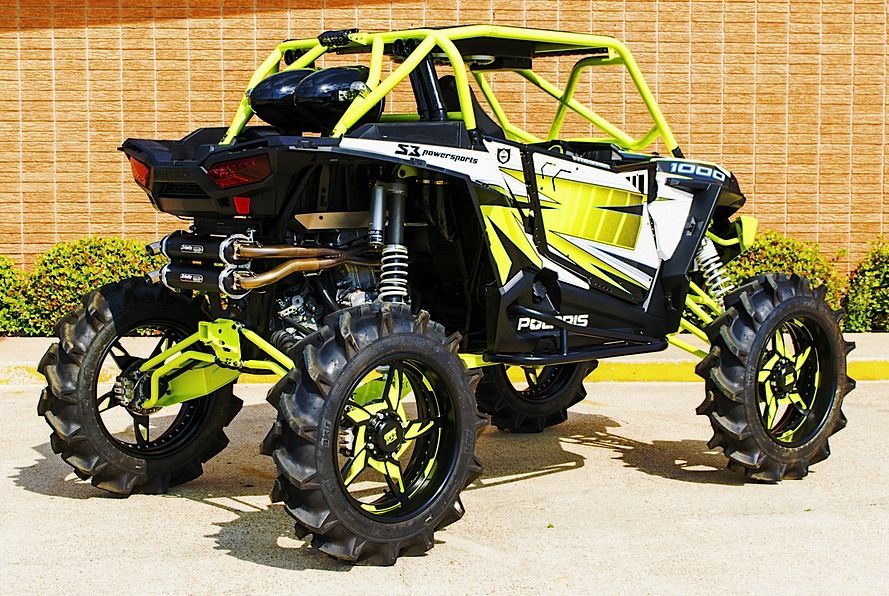 I admit, I do admire the swivel hitch designs for safety considerations in rough terrain – if you misjudge your centre of gravity, your cart can tip without flipping the ATV on its side as well.
I admit, I do admire the swivel hitch designs for safety considerations in rough terrain – if you misjudge your centre of gravity, your cart can tip without flipping the ATV on its side as well.
I had a great deal of fun researching and building this project. I learned new skills and created something that makes me proud to look at and use. Plus, I now have a custom trailer that is more solid and heavy-duty than most commercially made items of this size. If I wished to get it inspected and licenced, I could use it on the road behind my truck as well.
Have fun choosing your options and building your own utility trailer!
Step 1, plans and parts: I decided on the size, shape and parts specification for the trailer I wanted to build. I scrounged used metal where I could and purchased the parts and materials I needed.
Step 2, layout: Metal parts measured and marked in preparation for cutting.
Step 3, cutting: I used a chop saw to cut most of the metal parts to length.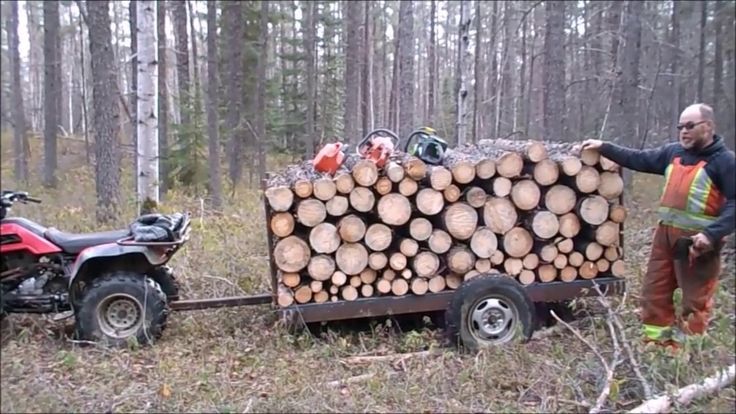 A metal cutting bandsaw is another method for cutting metal parts.
A metal cutting bandsaw is another method for cutting metal parts.
Step 4, metal preparation: Good metal preparation is crucial to good welds, especially when using recycled metal. Here, a wire brush on an angle grinder removes old paint and rust.
Step 5, welding: Magnetic clamps hold the workpiece while welding, keeping everything square. For the perfect fit, the axle assemblies were used as a spacer while the supports were tack-welded into place.
Step 6, painting: After welding the frame, the steel was painted before assembling.
Step 7A, assembly: The axel assemblies were bolted onto the frame supports, followed by tire installation.
Step 7B, assembly: The hitch coupler was bolted to the tongue to facilitate future upgrades or replacement.
Step 8, final details: Install side arms and pre-cut decking.
The final product, showing clearance, axel assembly and tires.
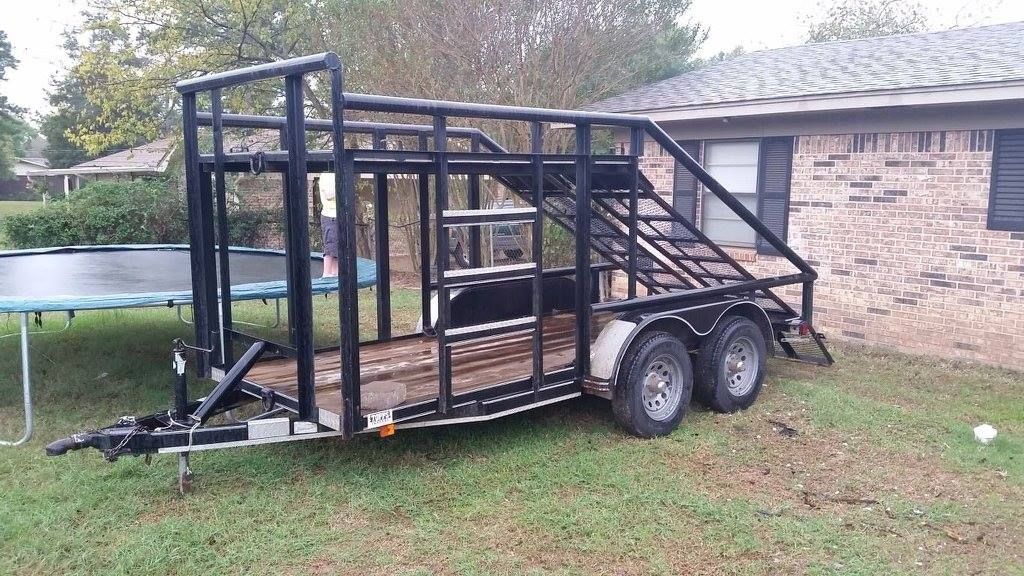
by Don Kress
black atv image by Dumitrescu Ciprian from Fotolia.com
Building a pull-behind trailer for your ATV, whether you are a hunter or simply want to haul heavy loads around your property, makes practical sense. Building your own trailer can save you hundreds of dollars, and you can also set up the trailer as you see fit.
Cut two of the eight foot boards into four foot sections, and then lay them on the ground parallel to each other. The two closest to each another will form the base of the trailer.
Cut the two six-foot boards into three foot sections, and then use screws to build two rectangles from these pieces.
Use the jig saw to cut a piece from the plywood that is three feet wide by four feet long. Screw this piece to the base of the body of the trailer. Then cut the two side boards, each of which will measure one foot wide by four feet long.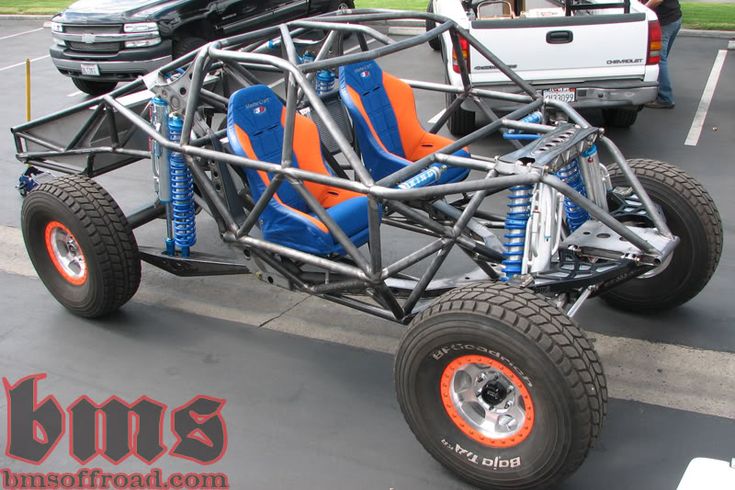 Cut the front and back panels next, measuring one foot wide by three feet long.
Cut the front and back panels next, measuring one foot wide by three feet long.
Cut four one-foot sections from the remaining 2-by-4 board and screw these to the inside corners of the trailer's base. With all four in place, screw the top frame of the trailer to the standing pieces to form a box, and then screw into place the side boards as well as the front and back boards.
Install the tires and wheels to the axle, and then install the axle on the bottom side of the trailer, securing it with carriage bolts. Next, install the tongue of the trailer running from the axle shaft out the front of the trailer. Drill holes where this will be placed, and secure it with carriage bolts in at least three places. Secure the trailer to the ATV hitch with a clevis pin.
References
Tips
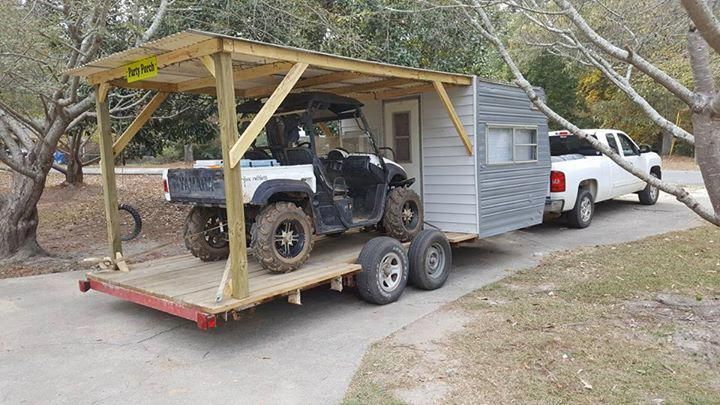
Things You'll Need
Writer Bio
Don Kress began writing professionally in 2006, specializing in automotive technology for various websites. An Automotive Service Excellence (ASE) certified technician since 2003, he has worked as a painter and currently owns his own automotive service business in Georgia. Kress attended the University of Akron, Ohio, earning an associate degree in business management in 2000.
Articles
20 Feb
At first glance, it may seem that assembling a homemade ATV is not an easy task.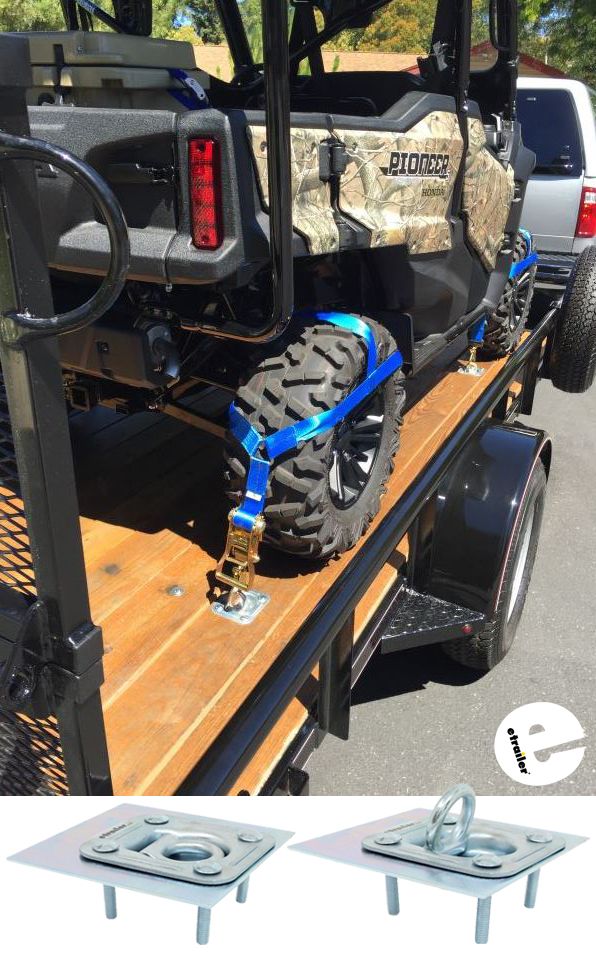 In fact, everything is much simpler than it seems, with the necessary parts and tools. An all-terrain vehicle of this type is usually constructed from parts that can be found on any unused motorcycle that is in decent working order.
In fact, everything is much simpler than it seems, with the necessary parts and tools. An all-terrain vehicle of this type is usually constructed from parts that can be found on any unused motorcycle that is in decent working order.
To assemble the machine yourself, you may need the following tools:
• Welding machine.
• Bulgarian.
• Good set of ring and socket wrenches.
• Other small tools such as pliers and screwdrivers.
To assemble the ATV, you will need a small room with good lighting and heating. If you assemble in the summer, you can sit under a canopy.
As a power unit for a homemade all-terrain vehicle, engines from Soviet-made motorcycles such as the Ural or Dnepr are suitable. For lighter and more maneuverable equipment, you can use units from motorcycles such as "Java" or "IZH", which were equipped with single-cylinder two-stroke engines.
To simplify the design of the future ATV, together with the engine it is better to use the same transmission and drive with which they were originally equipped.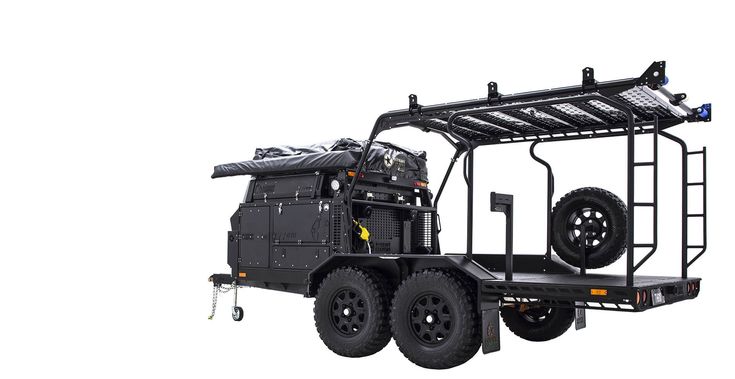 To design a machine with all-wheel drive, you will need to install an additional gearbox. This is extremely rarely used in home-made devices, since it will be difficult to implement an additional node without a sharp increase in weight at home.
To design a machine with all-wheel drive, you will need to install an additional gearbox. This is extremely rarely used in home-made devices, since it will be difficult to implement an additional node without a sharp increase in weight at home.
The frame for a homemade machine is usually made by yourself from scratch. As a material for the frame, you can use blanks from an old motorcycle. The pipes from which they are made are light in weight and have the necessary strength and flexibility. In extreme cases, you can choose the material yourself. Here the main parameter will be weight. Excessively thick pipes or profiles will make the ATV very heavy and unbearable for fast and maneuverable riding.
Shock absorbers with springs from the same motorcycles can be used as suspension. The suspension itself is made in the form of the letter "A", and is movably fixed on the frame. Shock absorbers and springs should be selected in such a way that they can withstand the weight of the future car, and provide a smooth ride with good handling on bumps and pits.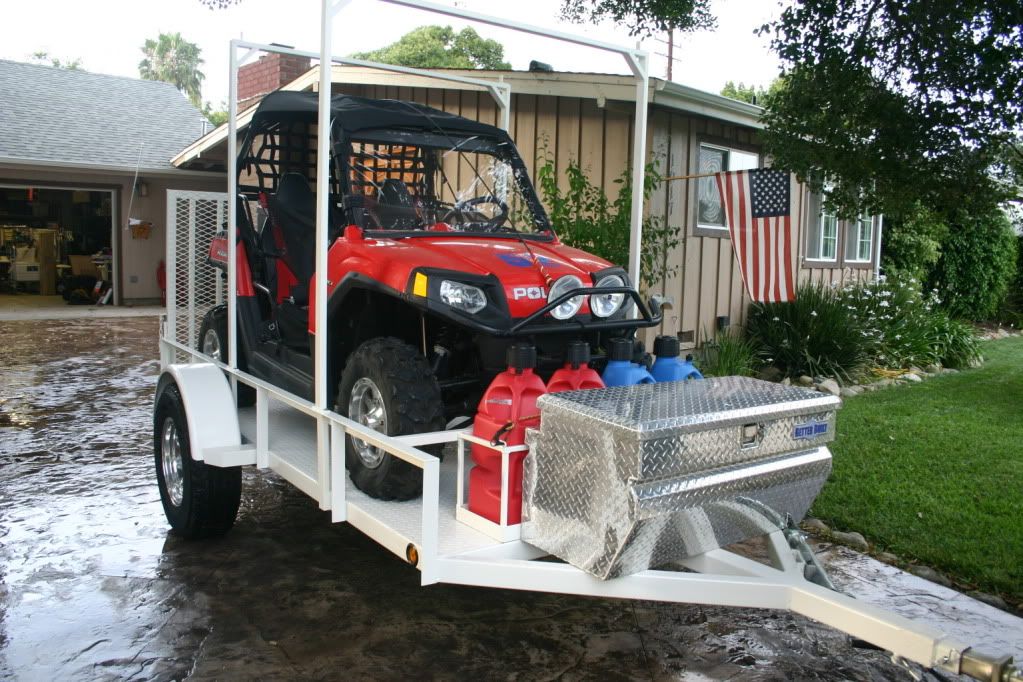
Partially motorcycle steering can be used, with the addition of two-wheel drive. The drive is carried out by adding levers and ball joints to the design, which can be borrowed from the car. The main task of steering is precise and comfortable steering.
ATV wheels are best used from inside the vehicle, as they are wider and will allow for more cross-country ability. The diameter of the wheels must be calculated in such a way that a home-made ATV can develop sufficient speed, and also have a harmonious appearance.
Attachments, gas tank and controls can be mounted on a motorcycle frame that is structurally connected to an ATV frame. In this case, special attention should be paid to the stability of the all-terrain vehicle, its appearance and the convenience of the driver.
Do not forget about installing all the necessary lighting and outdoor signaling devices on a homemade ATV.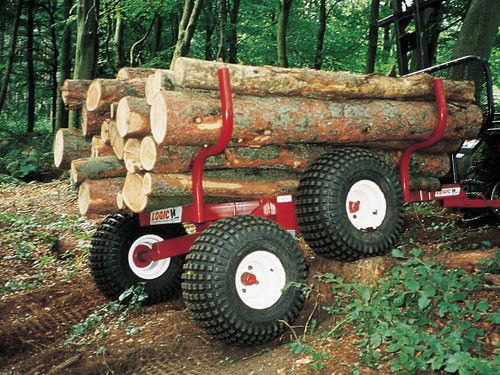 The headlights, taillights and direction indicators can be used from the same motorcycle from which everything else was taken.
The headlights, taillights and direction indicators can be used from the same motorcycle from which everything else was taken.
Look how homemade ATV is in action!
Good afternoon! I want to show instructions for making a simple ATV. Such an ATV can ride with an engine from a moped, motorcycle or walk-behind tractor. Excellent homemade product for driving through the forest, picking mushrooms, as well as for hunting or fishing.
If you are interested in homemade, I propose to study the manufacture in more detail!

Frame and front suspension
We weld a simple frame from shaped pipes, welded corners with holes in the front part.
We attach ready-made purchased front suspension forks and hubs to the brackets
Hubs can be taken from an ATV or a car.
We fix shock absorbers.
We weld brackets to the frame and install the engine. You can take the motor of a moped, motorcycle or walk-behind tractor, the power will not be superfluous here, since the rear is a one-piece drive axle without a differential. We mount the motor securely, it is advisable to use rubber pads to reduce vibrations and prevent friction of the fasteners on the frame.
We weld pipes to the steering tips, thereby lengthening the steering rods.